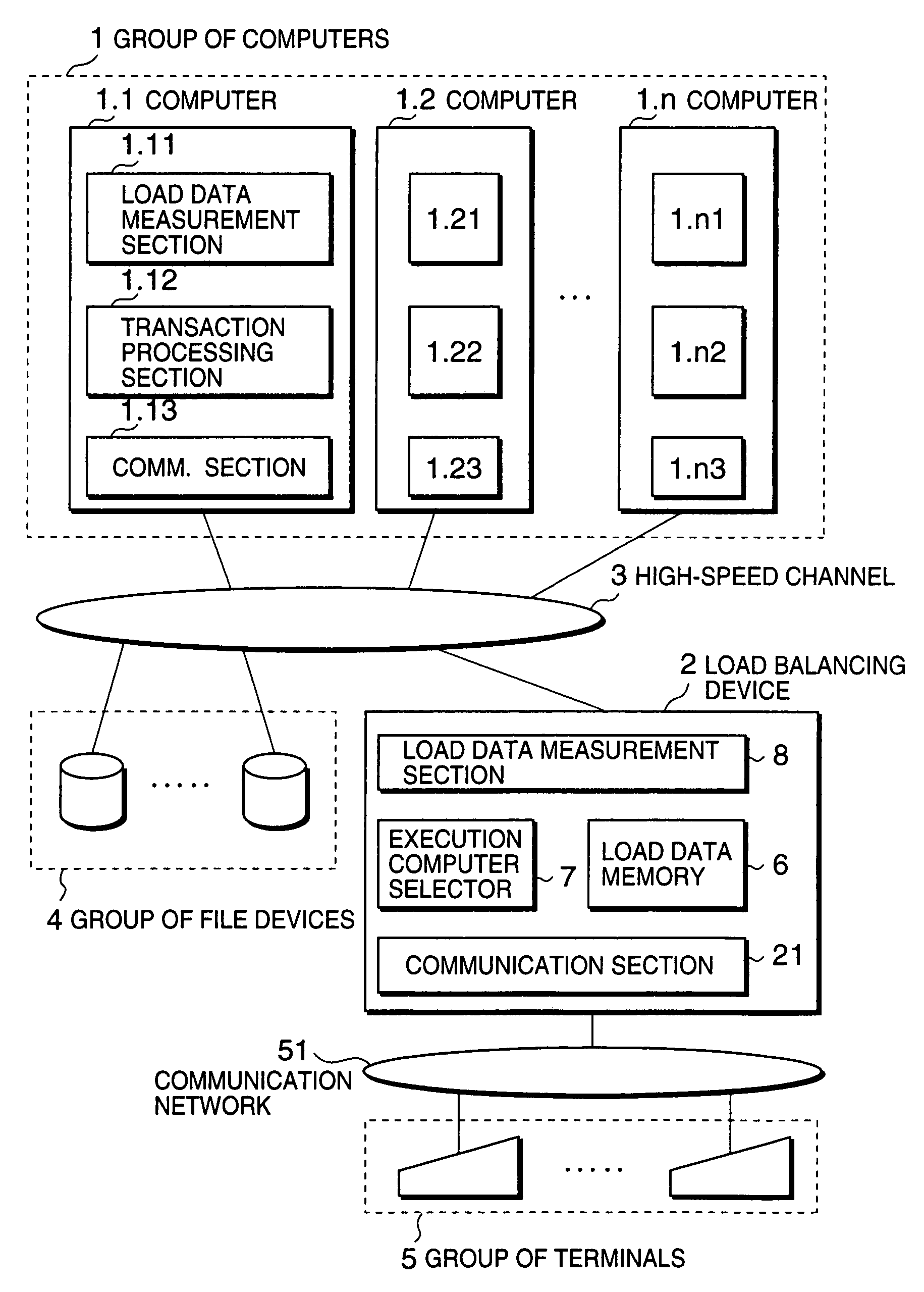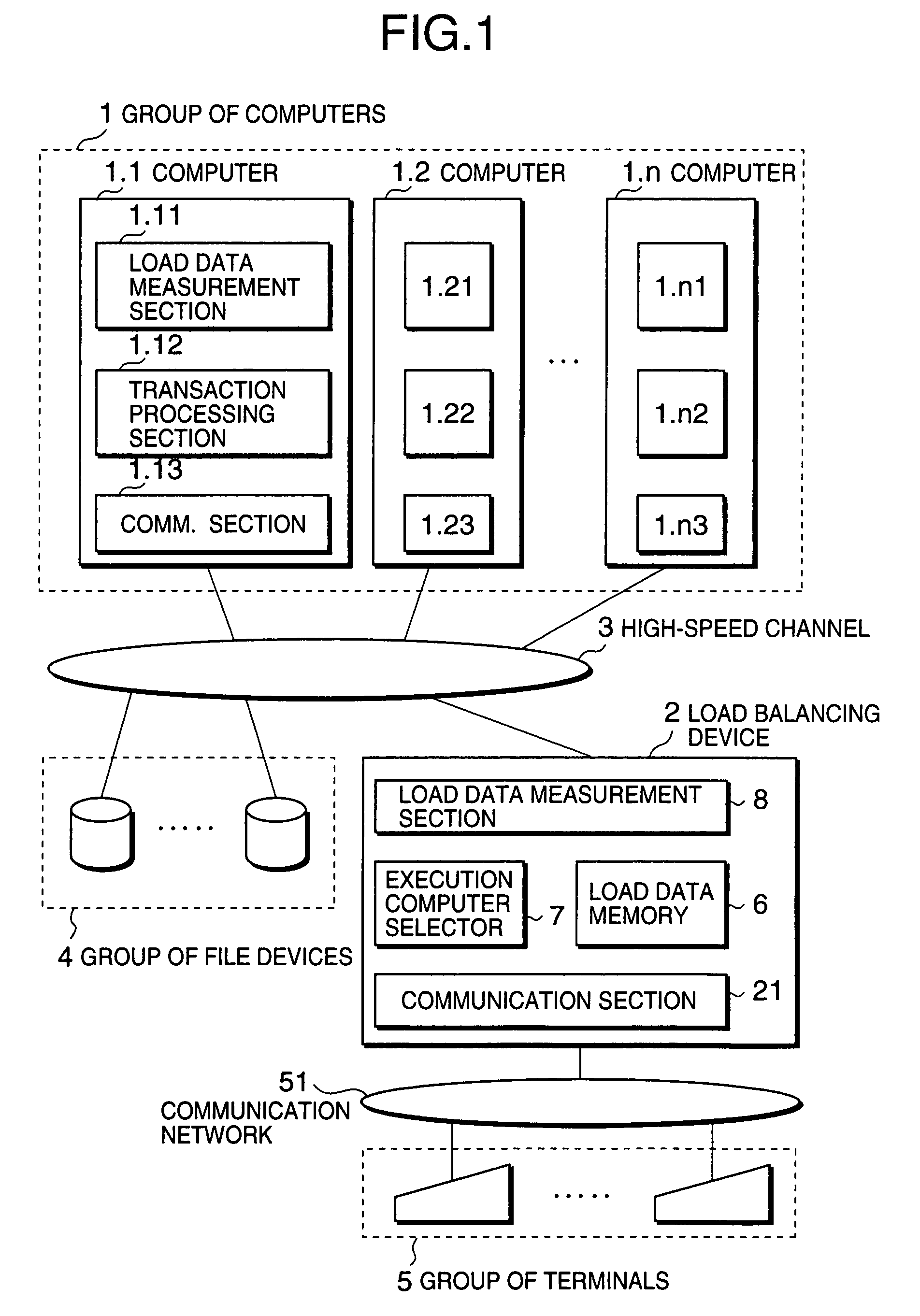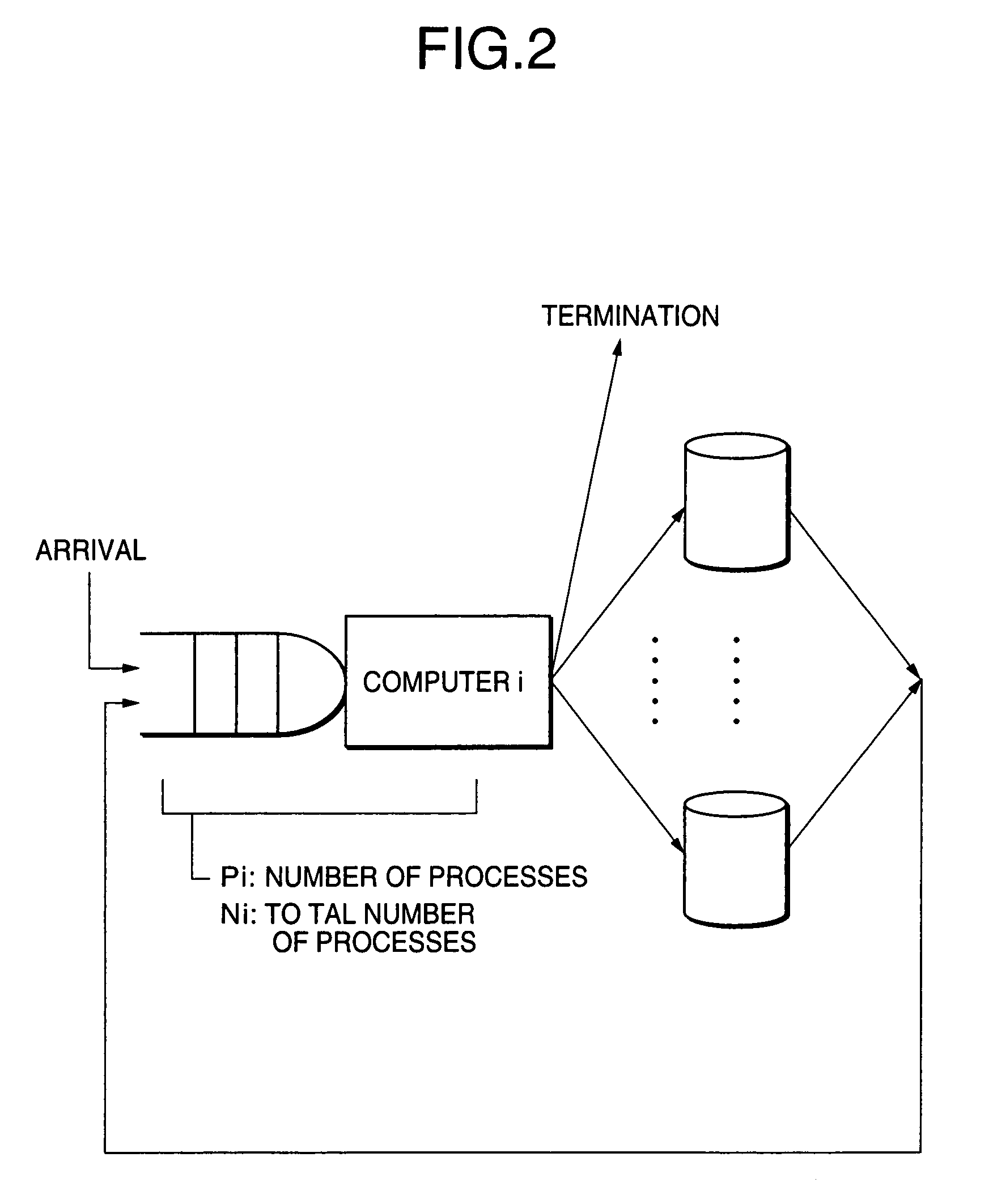Load balancing method and system based on estimated elongation rates
a load balancing and estimated elongation technology, applied in the field of load balancing methods and systems based on estimated elongation rates, can solve the problems of not necessarily ensuring that such individual optimization systems are directly linked to the optimization of the whole system, the load state of each computer that is used to determine the load balancing cannot be sufficiently grasped, and the merit of dynamic control will mostly be lost. , to achieve the effect of keeping the system-wide mean and the variation of respons
- Summary
- Abstract
- Description
- Claims
- Application Information
AI Technical Summary
Benefits of technology
Problems solved by technology
Method used
Image
Examples
first embodiment
1.1 System configuration
[0050]Referring to FIG. 1, a computer group 1 is composed of n computers 1.1 through 1.n (generally denoted by 1.x), each of which is a program-controlled computer. The computer group 1 is connected to a load balancing device 2 and a file device group 4 through a high-speed channel 3. The load balancing device 2 is further connected to a terminal group 5 through a communication network 51.
[0051]In the computer group 1, a computer 1.x (x=1, 2, . . . , or n) includes a load data measurement section 1.x1, a transaction processing section 1.x2, and a communication section 1.x3. The transaction processing section 1.x2 includes a plurality of job processing processes (not shown).
[0052]The load balancing device 2 includes a communication section 21, a load data memory 6, an execution computer selector 7, and a load data measurement section 8. The computers 1.1 to 1.n do not share a main memory but the file device group 4 via the high-speed channel 3 with equivalent ...
second embodiment
[0104]Now, a second embodiment of the present invention will be described in detail.
2.1 System Configuration
[0105]Referring to FIG. 6, the second embodiment of the present invention is different, as for the composition, from the first embodiment in that the terminal devices of the terminal group 5 are connected directly to the computers 1.1 through 1.n via the communication network 51 without the load balancing device 2 and that a switch and storage fabric 10 is connected to the computers 1.1 through 1.n.
[0106]Since the load balancing device 2 is removed, a computer 1.i includes a load data memory 6.i, an execution computer selector 7.i and load data measurement section 8.i in addition to the load data measurement section 1.i1, the transaction processing section 1.i2 and the communication section 1.i3. These respective sections may be realized by running respective ones of programs stored in a recoding media (not shown) as in the first embodiment.
[0107]A single transaction is proce...
third embodiment
[0130]A third embodiment of the present invention will be described in detail with reference to FIGS. 7–9.
3.1 System Configuration
[0131]As shown in FIG. 7, the third embodiment of the present invention is different in system configuration from the second embodiment. In the third embodiment, an interim load balancing device 25 is provided, through which the terminal group 5 is connected to each of the computers 1.1–1.n.
[0132]A single transaction is processed as described below. A transaction processing, request message is sent from a terminal device belonging to the terminal group 5, and is received by the interim load balancing device 25 via the communication network 51. The interim load balancing device 25, when receiving the transaction processing request message, determines an interim destination computer according to static / quasi-static decision scheme or without using dynamic information in the dynamic load balancing control. The details of the static / quasi-static decision sch...
PUM
 Login to View More
Login to View More Abstract
Description
Claims
Application Information
 Login to View More
Login to View More - R&D
- Intellectual Property
- Life Sciences
- Materials
- Tech Scout
- Unparalleled Data Quality
- Higher Quality Content
- 60% Fewer Hallucinations
Browse by: Latest US Patents, China's latest patents, Technical Efficacy Thesaurus, Application Domain, Technology Topic, Popular Technical Reports.
© 2025 PatSnap. All rights reserved.Legal|Privacy policy|Modern Slavery Act Transparency Statement|Sitemap|About US| Contact US: help@patsnap.com



